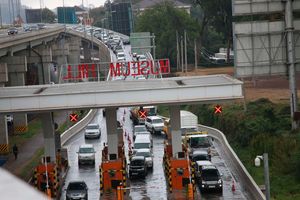
Passing and effecting the proposals would have had far-reaching effects on the real estate industry.
Following nationwide protests that left behind a trail of death and destruction across various parts of the country, President William Ruto conceded to pressure and declined to sign the controversial Finance Bill 2024 into law.
The bill proposed the removal of Value Added Tax exemption on insurance and reinsurance services, including insurance on real estate products such as mortgage insurance.
As such, mortgage insurance would have been subjected to VAT at the standard rate of 16 percent, which insurers would have likely passed on to consumers, thus driving up the cost of mortgage loans.
This would affect the rate of mortgage uptake in the country, which compared to the global average is quite low, making it even more difficult for Kenyans to purchase homes.
“Limiting the VAT exemption on insurance services to premiums means that other insurance services including mortgage insurance would be subject to VAT which would be passed on to consumers,” said Alex Njage, Head of Commercial Property at Bowmans Kenya.
According to estimates, there are only slightly over 25, 000 mortgage accounts registered in Kenya, out of a population of more than 50 million people.
High interest rates
“For the average Kenyan who earns no more than Sh50, 000 a month, mortgages are already out of reach because of the relatively high interest rates and strict requirements,” said Kevin Rotich, an insurance agent.
Generally, before fully signing off a mortgage loan to a customer, most financial institutions will require for the loan to be insured, in order to minimise risks of defaulting.
Mortgage insurance comes in as a safeguard not only for the lender but also the buyer. The three common types of mortgage insurance covers are retrenchment insurance cover, mortgage protection insurance and fire and perils insurance.
The retrenchment cover is the most popular of the three, where the insurance company continues to service the mortgage premiums for a period of about six months after one loses their job as a result of retrenchment or redundancy.
Initially, it was not very popular, but since the Covid19 pandemic struck a few years ago, resulting in massive job losses, most financial institutions have made it a mandatory requirement for buyers to sign up to this product.
The mortgage protection insurance covers death and permanent disability. If someone passes on during the duration of the mortgage, the insurance company is obliged to pay up the outstanding mortgage balance.
The title deed of the property is then passed on to the next of kin. This cover thus safeguards the next of kin from the burden of taking over the mortgage, in the event that the policy holder passes on suddenly.
“The repercussions of failing to sign up to this policy can be dire since if they are not capable of continuing to service the mortgage, the next of kin could be exposed to the risk of losing the property altogether,” says Rotich.
Perils insurance cover
The third cover, which is the fire and perils insurance cover, safeguards the building against risks such as fire, floods or earthquakes and is thus also mandatory at the time of taking a mortgage.
Given the binding nature of these covers, Rotich notes that there was reason for the industry to be concerned about the Finance Bill 2024, and act to avert a potential crisis in future, if not for anything else, to uphold the integrity of the mortgage market.
“Implementation of the bill would have had far-reaching adverse effects on both the insurance industry and the real estate industry,” says the underwriter.
In more advanced economies, mortgages have been used as a vehicle to enable the working-class population to own homes. Formation of the Kenya Mortgage Refinance Company (KMRC) in 2018 was meant to help the country achieve the same.
The firm would mobilize long-term funding for onward lending to participating lenders, which include commercial banks, savings and credit cooperatives (SACCOs) as well as microfinance institutions.
The lenders would then match the maturities of the long-term credit availed to them by KMRC with the home loans they would offer to borrowers.
They would thus be able to lend at lower interest rates of single digits, hence enhancing affordability. However, Mohsin Adamjee, an auditor and tax expert, notes that mortgage loans are still out of reach of many Kenyans due to high rates.
“Financial institutions generally shy away from funding real estate projects because of the high rate of defaulting, that is why interest rates are still very high,” says Adamjee.
According to Central Bank of Kenya data, real estate is among three sectors (others being manufacturing and trade) that contribute to a majority of all non-performing loans in the country.
Too much collateral
Financial institutions that offer mortgages also tend to require too much collateral or have application procedures that are too complex for consumers to follow.
For instance, many lenders will often require buyers to show proof of more than one stream of income to get financed, something which is rare in a country with high unemployment rates.
Others require bank statements or audited books of account of up to three years, to show proof of cash flow.
“Most mortgage loan applications are set in stone and that is why you see buyers going for options such as crowdfunding or Saccos, but these can hardly deliver the amounts needed to own property,” says Adamjee.
The Finance Bill 2024 would have not only affected mortgage loans but also construction loans. Following the nationwide protests against the controversial bill, the Departmental Committee on Finance and Planning amended it to exempt certain financial services from VAT.
These include issuing of credit and debit cards as well as foreign exchange transactions. The committee also amended the proposed rate of excise tax on money transfer services by banks from 20 percent to the initial 15 percent.
New levies
However, going by the committee’s statement, the amendments did not factor in other services subject to the new levies, which banks take into account while pricing loans.
These include management and related insurance consultancy services, actuarial services, services of insurance assessors and loss adjusters, issuance of securities for money and the provision of financial services on behalf of another on a commission basis.
Alex Njage, Head of Construction at Bowmans Kenya, says that already, loans are too expensive due to the high base lending rate imposed by the Central Bank of Kenya to control inflation, therefore pushing the price any higher could cripple the real estate sector.
Within the past one year, the CBK has raised the lending rate at least three times to reduce inflation and stabilise prices. In June last year, the CBK raised the rate from 9.5 percent to 10.5 percent.
This was before raising it to 12.5 percent in December and the current 13 percent in February, making borrowing more expensive and thus stifling development activity.
“Many customers are now paying interest rates of more than 20 percent, since banks take into account factors such as the risk of defaulting while pricing their loans,” says Njage.
According to data from the Central Bank of Kenya, towards the end of 2023, the average rate of loan default was 15 percent, the highest rate witnessed in two decades, attributed to the high cost of loans.
“Even the off-plan developers who take money from customers first then develop have been affected, because normally you cannot raise all the money from the customer at once, you’ll raise about 60 percent as equity then 40 percent as debt (loans),” says Njage.
This has resulted in a lot of projects stalling, with some developers now opting to put the money acquired as loans into other ventures likely to generate quicker earnings such as retail trade, to be able to pay back the loans on time.
“The natural reaction for developers will be to park their cash equity in bonds and fixed income securities that offer up to 18 percent returns, with very low risk, as opposed to investing in a project where they will need to borrow money at a cost that’s not profitable or sustainable,” says Njage.
Affordable housing scheme
Developers who have been affected most by high cost of construction loans are those participating in the affordable housing scheme, who rely fully on debt financing to undertake their development projects, then generate a return once they sign off the building to the contractor, who is the government.
According to figures from the Kenya Property Developers Association (KPDA), against an annual demand of 250, 000 housing units, only about 50, 000 are being constructed currently in a year, as a result of a high cost of construction loans.
“When the loan is expensive, the profit margin reduces. So, what we are seeing is that many developers are now shunning affordable housing, even with the incentives offered through subsidised cost of construction materials,” says Simon Malonza, a developer who has undertaken affordable housing works.
The high cost of loans is also having implications on the amount of rent that tenants are paying, as landlords are having to raise the rent in order to be able to fully service their loans on time.
“If we have a slow down in construction activities, it then means that we will have a limited number of properties for tenants to choose from, giving landlords the liberty to increase their rent as they know people would still be willing to pay,” poses Malonza.
According to the developer, while the bill sought to encourage uptake of the affordable housing through a 15 percent tax relief issued to buyers, it failed to incentivise developers enough to be able to put up the units that will be bought.
“The government seeks to make it easier for people to purchase homes under affordable housing, but if developers are not incentivised enough to develop, the buyers will not be able to enjoy the proposed relief,” says Malonza.
Importing raw materials
The bill further proposed to impose a 3 percent export and investment promotion levy on a number of items used in construction including ceramic sinks, wash basins, baths, bidets, water closet pans, flushing cistern, urinals and similar sanitary fixtures, as well as metal and wooden furniture.
Over the past few years, the construction industry in Kenya has witnessed a notable surge in the cost of building materials, largely as a result of the increase in costs of importing raw materials, with a recent report by the Architectural Association of Kenya (AAK), noting that the cost of construction surged from between Sh34,650 and Sh77,500 per square metre at the beginning of 2023 to between Sh41,600 and Sh100,800 by December 2023.
On a positive note, however, the bill proposed to reduce the export and investment promotion levy on cement clinker from 17.5 percent of the customs value to 10 percent of the customs value, while reducing that on semi-finished products of iron or non-alloy steel to zero.
Other provisions in the bill that would likely have affected the real estate sector include repealing of VAT exemption in relation to construction of certain buildings and facilities such as convention and conference facilities, tourism facilities and specialised hospitals.
The bill also limited the Capital Gains Tax (CGT) exemption on property transfers within an SEZ to transfers made by licensed SEZ entities.










